World-first firing of air-breathing electric thruster
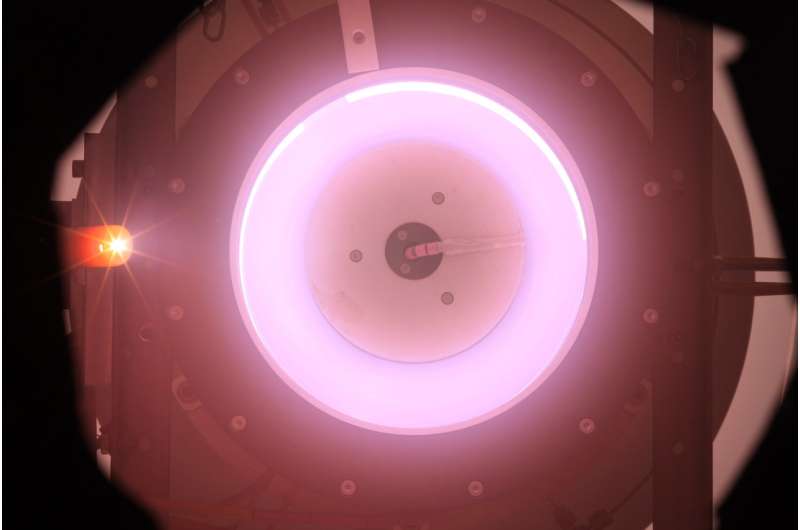
In a world first, an ESA-led team has built and fired an electric thruster to ingest scarce air molecules from the top of the atmosphere for propellant, opening the way to satellites flying in very low orbits for years on end.
ESA's GOCE gravity-mapper flew as low as 250 km for more than five years thanks to an electric thruster that continuously compensated for air drag. However, its working life was limited by the 40 kg of xenon it carried as propellant – once that was exhausted, the mission was over.
Replacing onboard propellant with atmospheric molecules would create a new class of satellites able to operate in very low orbits for long periods.
Air-breathing electric thrusters could also be used at the outer fringes of atmospheres of other planets, drawing on the carbon dioxide of Mars, for instance.
"This project began with a novel design to scoop up air molecules as propellant from the top of Earth's atmosphere at around 200 km altitude with a typical speed of 7.8 km/s," explains ESA's Louis Walpot.
A complete thruster was developed for testing the concept by Sitael in Italy, which was performed in a vacuum chamber in their test facilities, simulating the environment at 200 km altitude.
A 'particle flow generator' provided the oncoming high-speed molecules for collection by the Ram-Electric Propulsion novel intake and thruster.
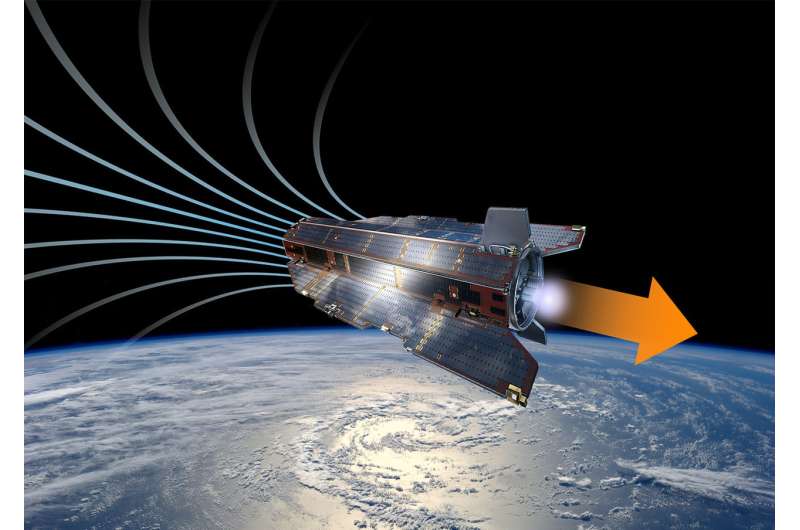
There are no valves or complex parts – everything works on a simple, passive basis. All that is needed is power to the coils and electrodes, creating an extremely robust drag-compensation system.
The challenge was to design a new type of intake to collect the air molecules so that instead of simply bouncing away they are collected and compressed.
The molecules collected by the intake designed by QuinteScience in Poland are given electric charges so that they can be accelerated and ejected to provide thrust.
Sitael designed a dual-stage thruster to ensure better charging and acceleration of the incoming air, which is harder to achieve than in traditional electric propulsion designs.
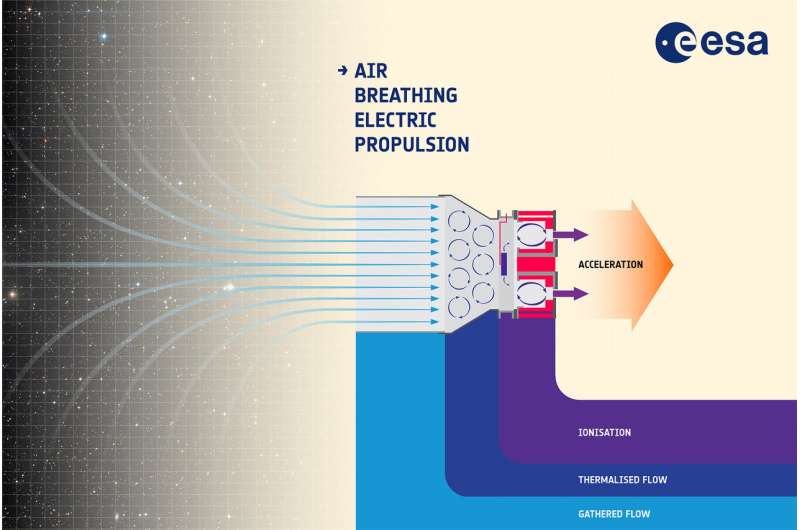
"The team ran computer simulations on particle behaviour to model all the different intake options," adds Louis, "but it all came down to this practical test to know if the combined intake and thruster would work together or not.
"Instead of simply measuring the resulting density at the collector to check the intake design, we decided to attach an electric thruster. In this way, we proved that we could indeed collect and compress the air molecules to a level where thruster ignition could take place, and measure the actual thrust.
"At first we checked our thruster could be ignited repeatedly with xenon gathered from the particle beam generator."
As a next step, Louis explains, the xenon was partially replaced by a nitrogen–oxygen air mixture: "When the xenon-based blue colour of the engine plume changed to purple, we knew we'd succeeded.
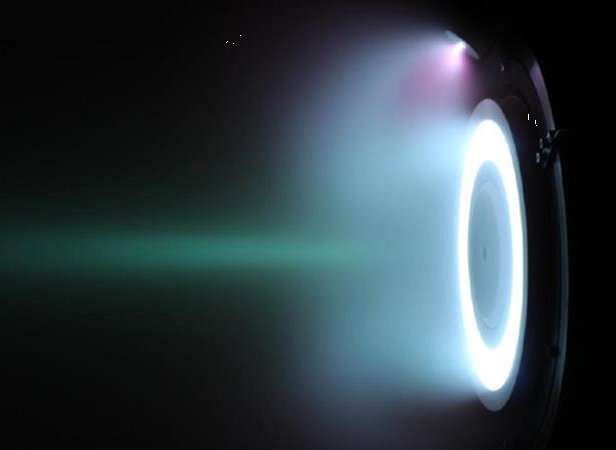
"The system was finally ignited repeatedly solely with atmospheric propellant to prove the concept's feasibility.
"This result means air-breathing electric propulsion is no longer simply a theory but a tangible, working concept, ready to be developed, to serve one day as the basis of a new class of missions."
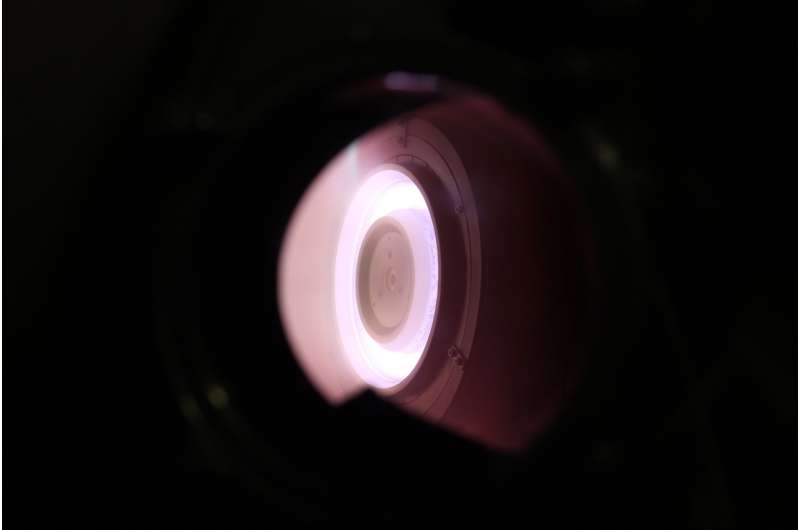
Provided by European Space Agency




















